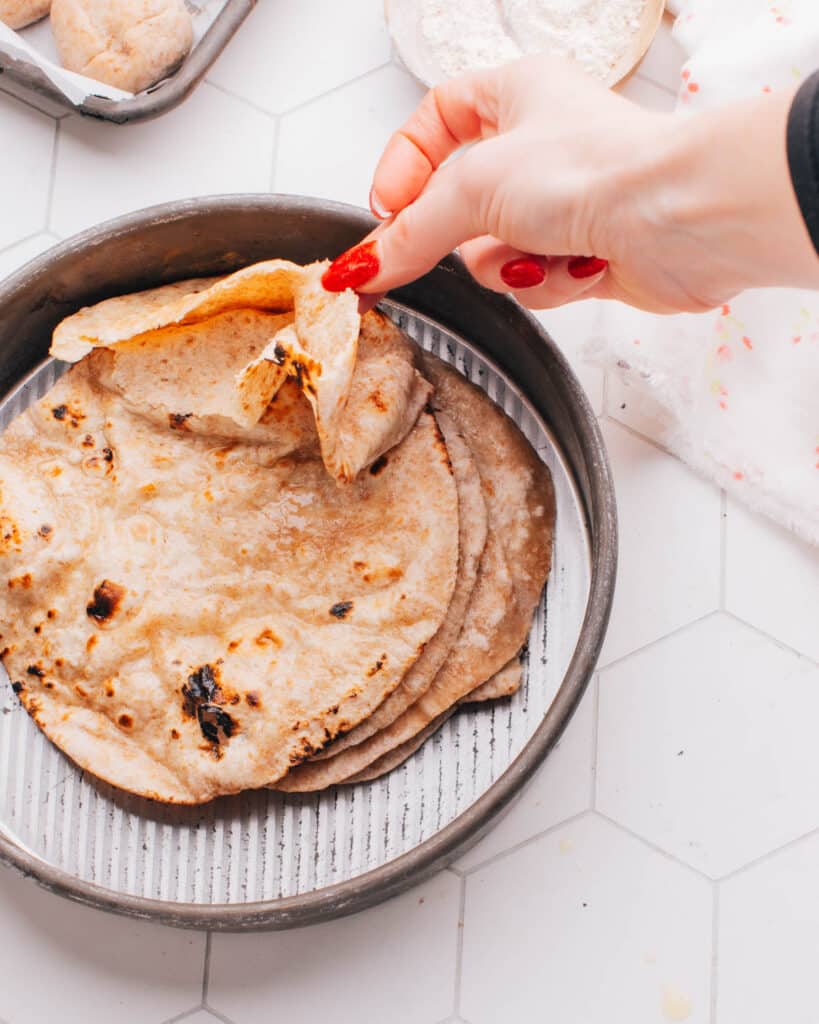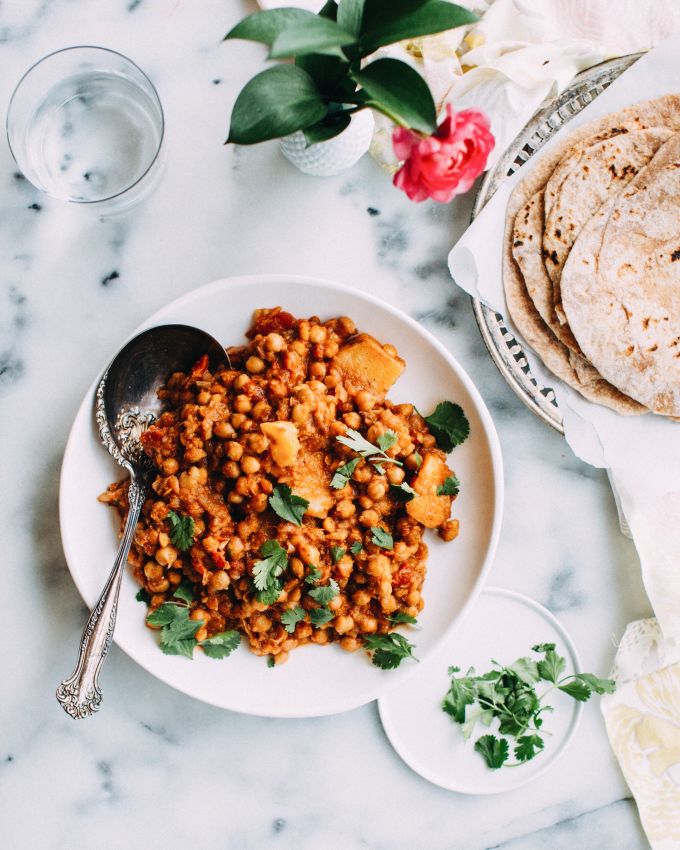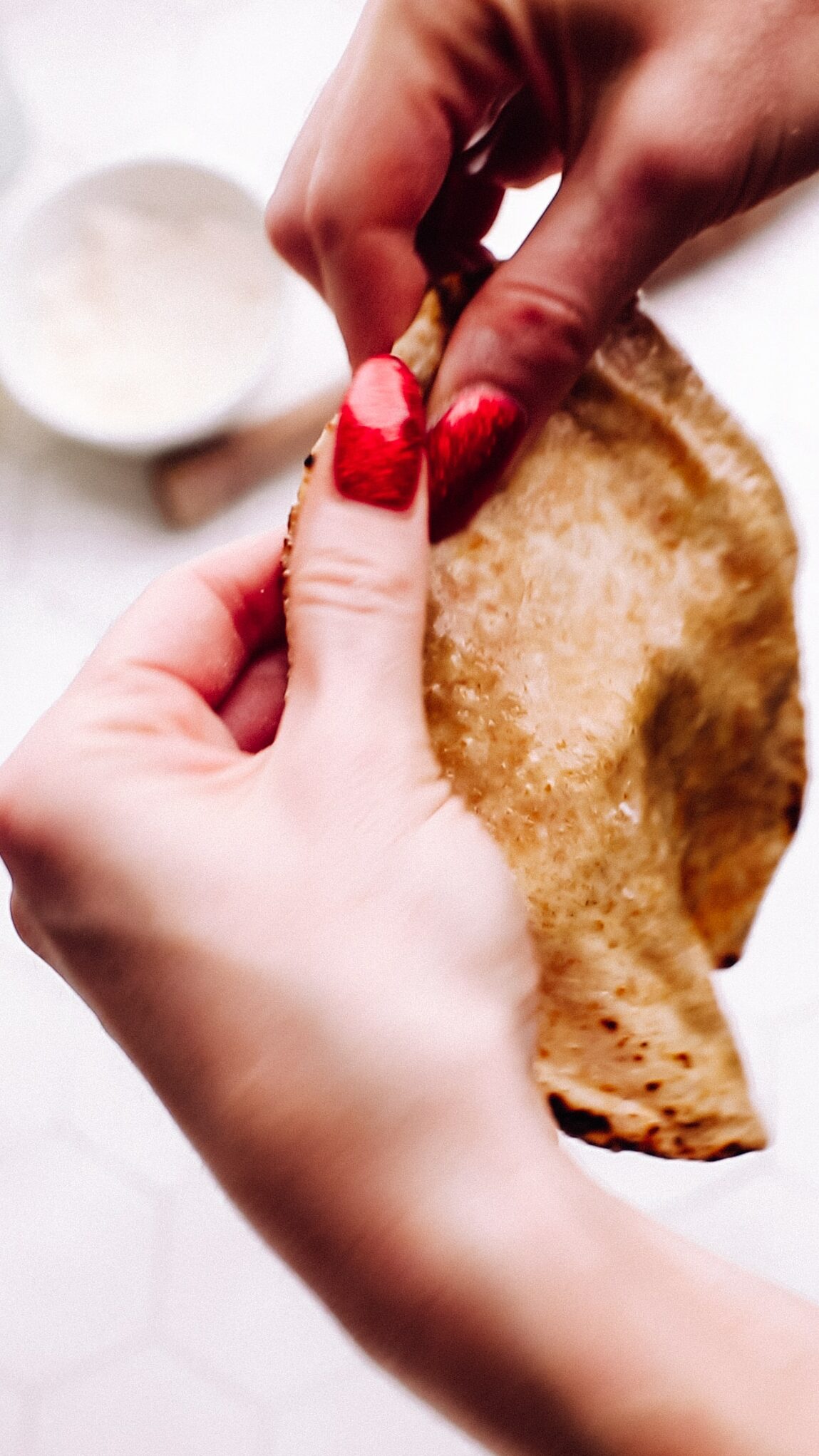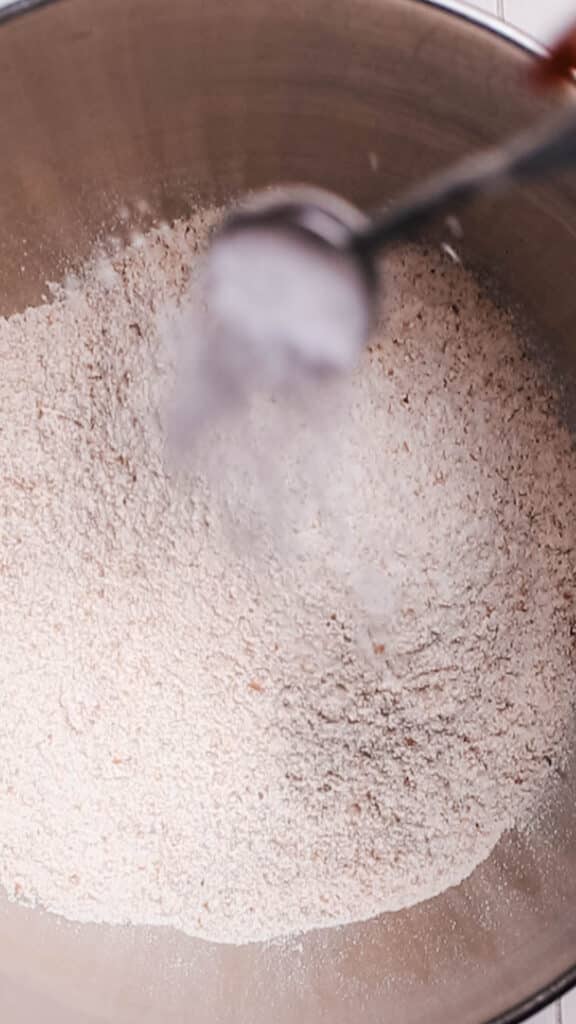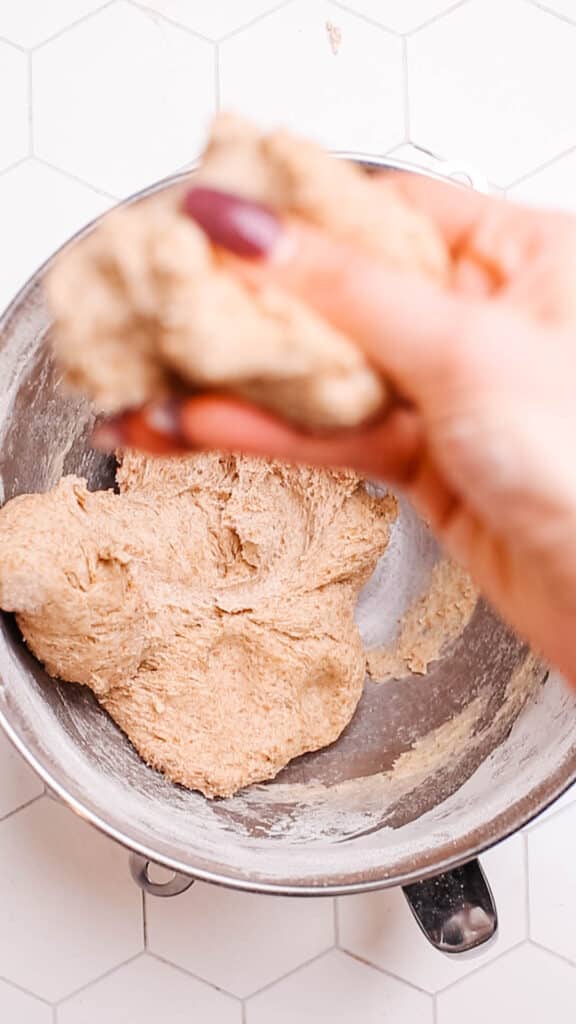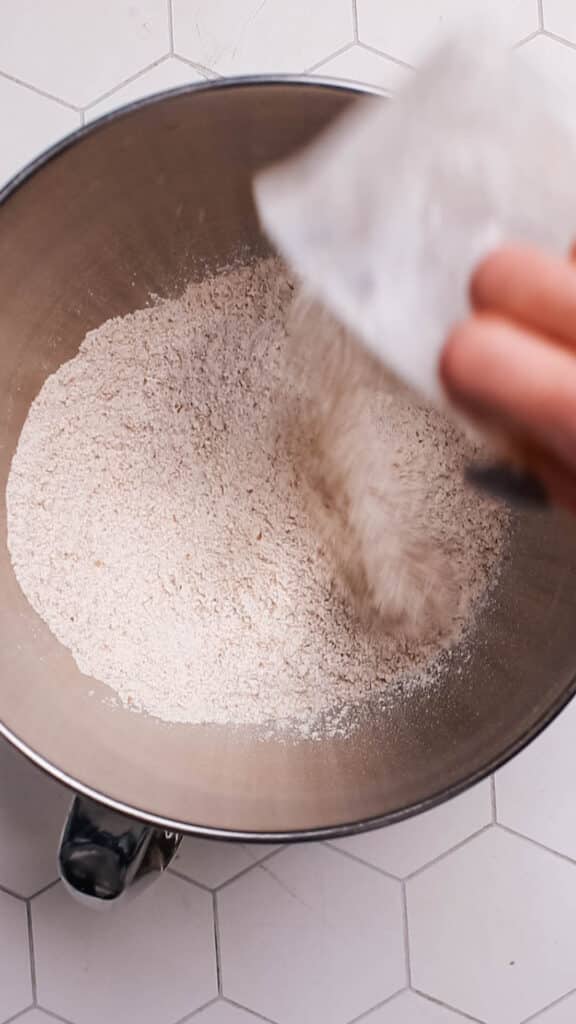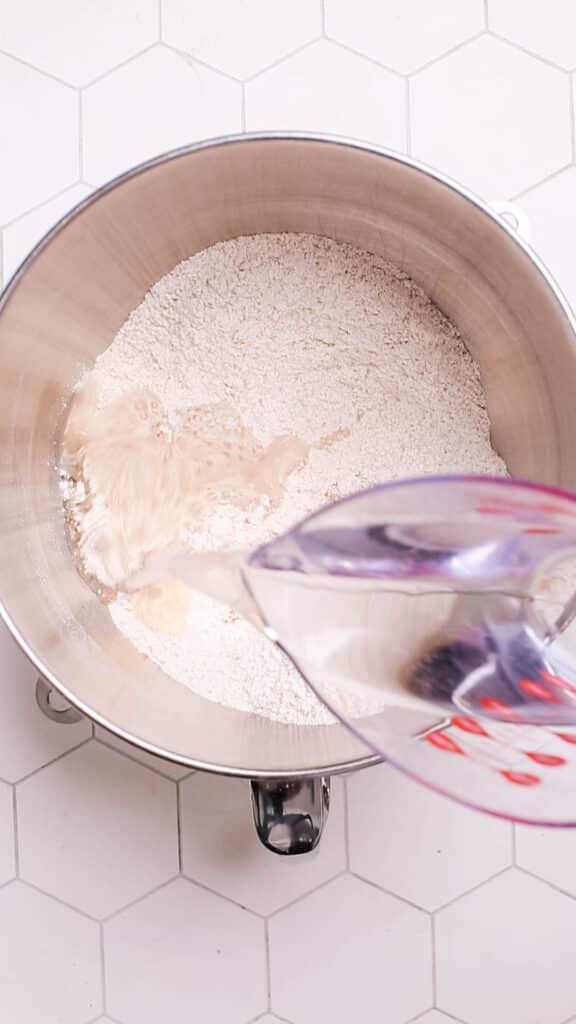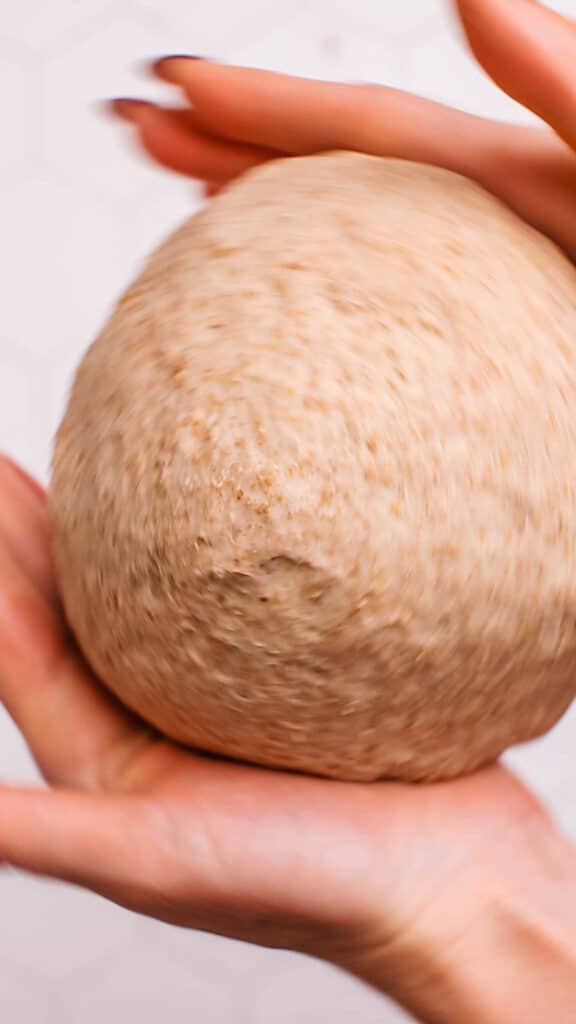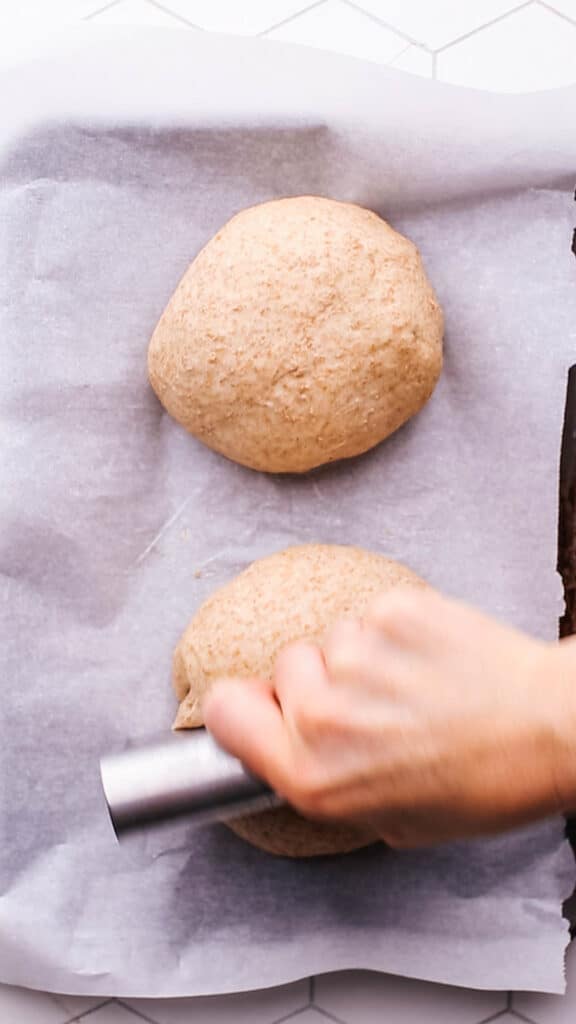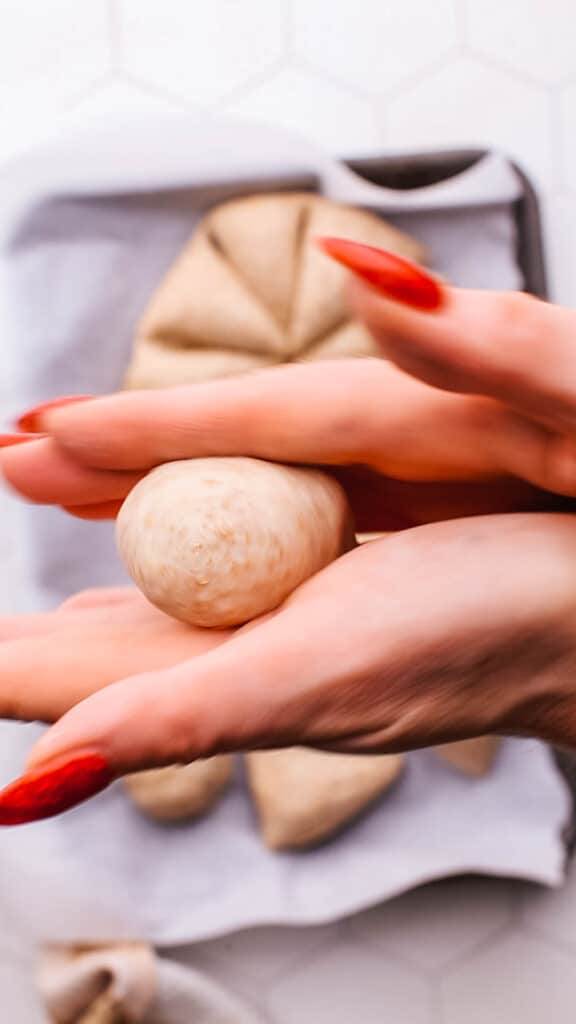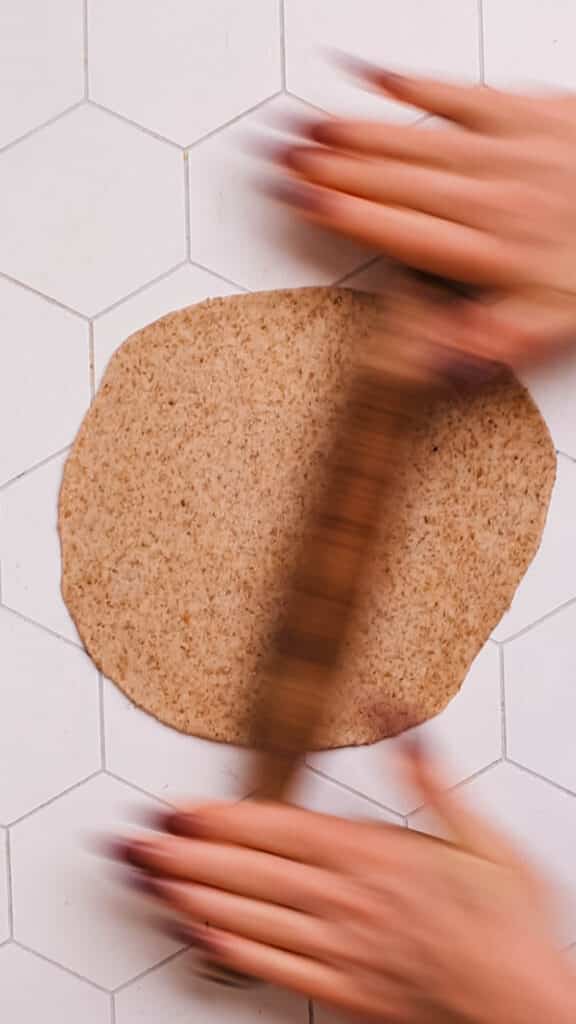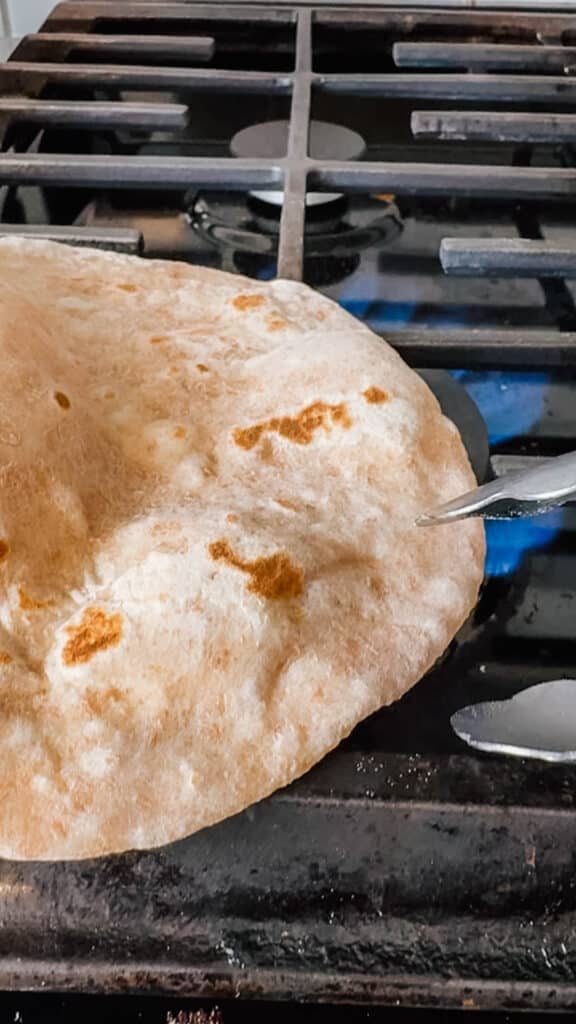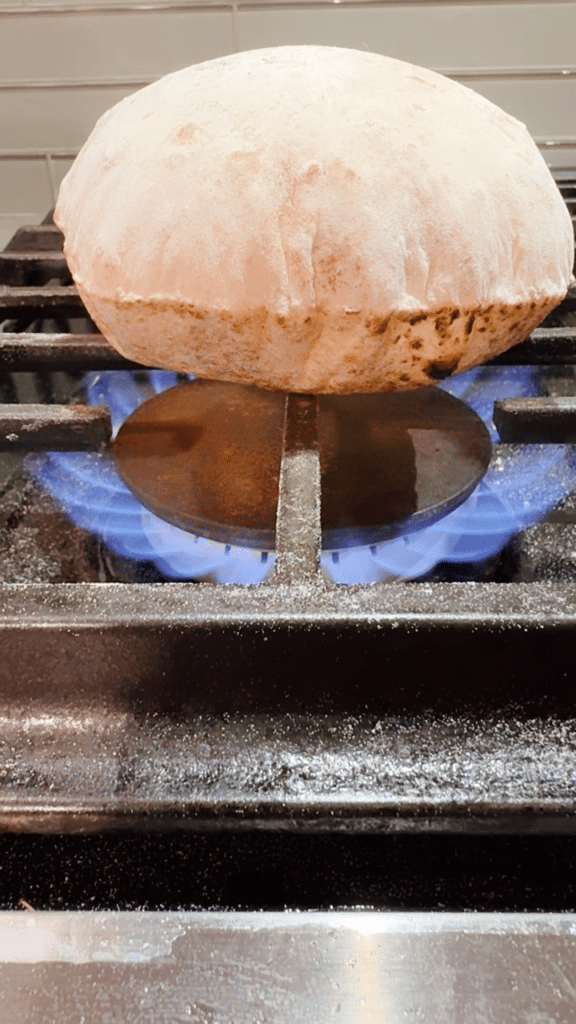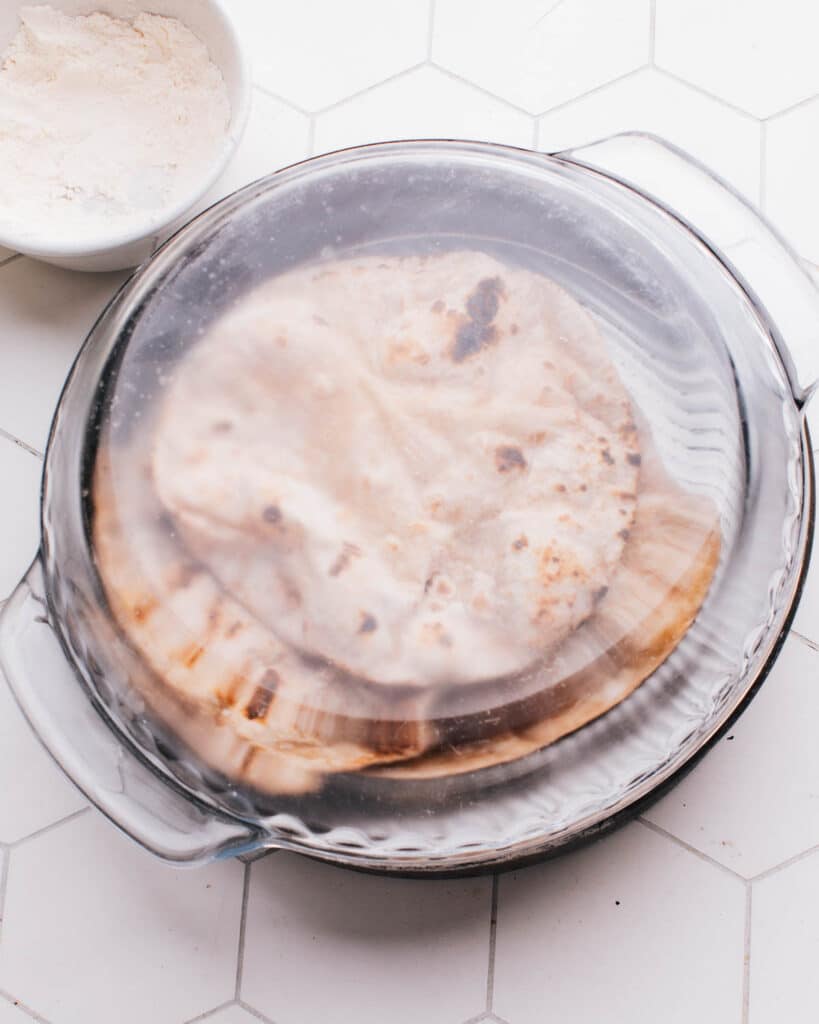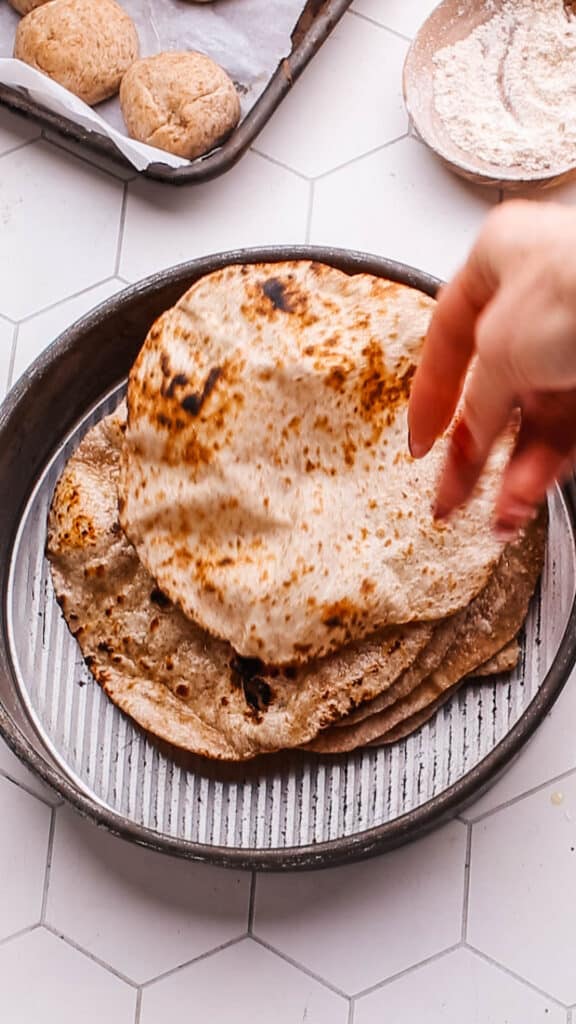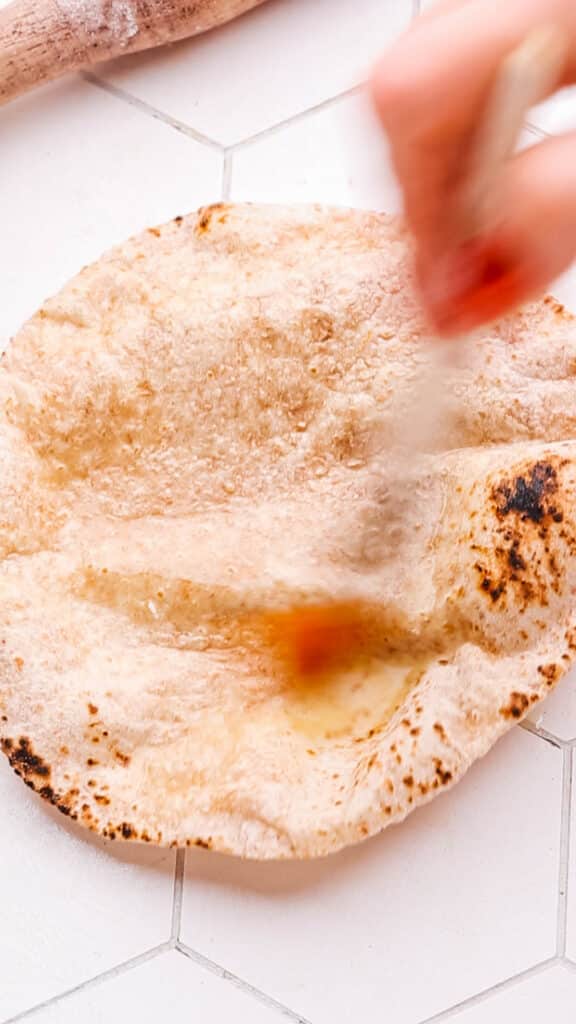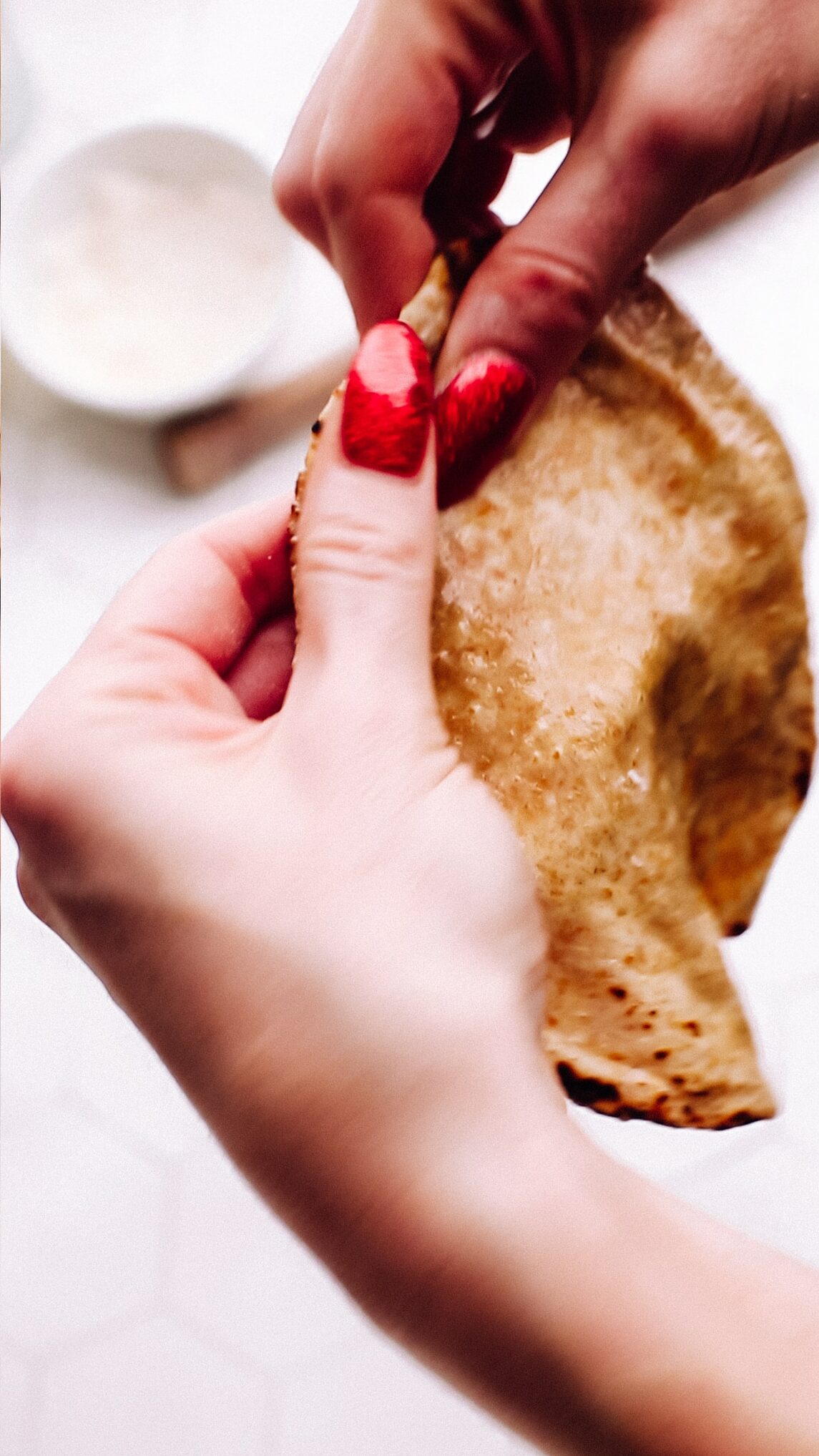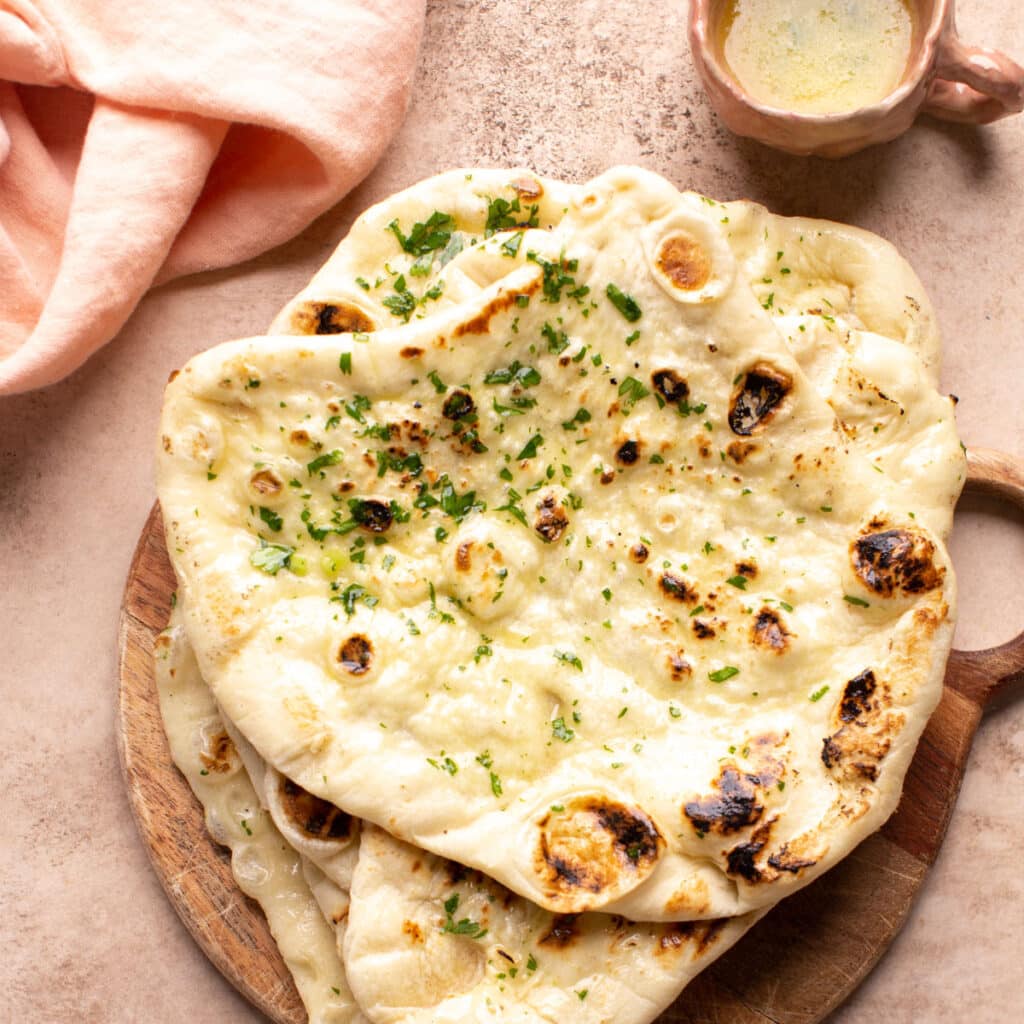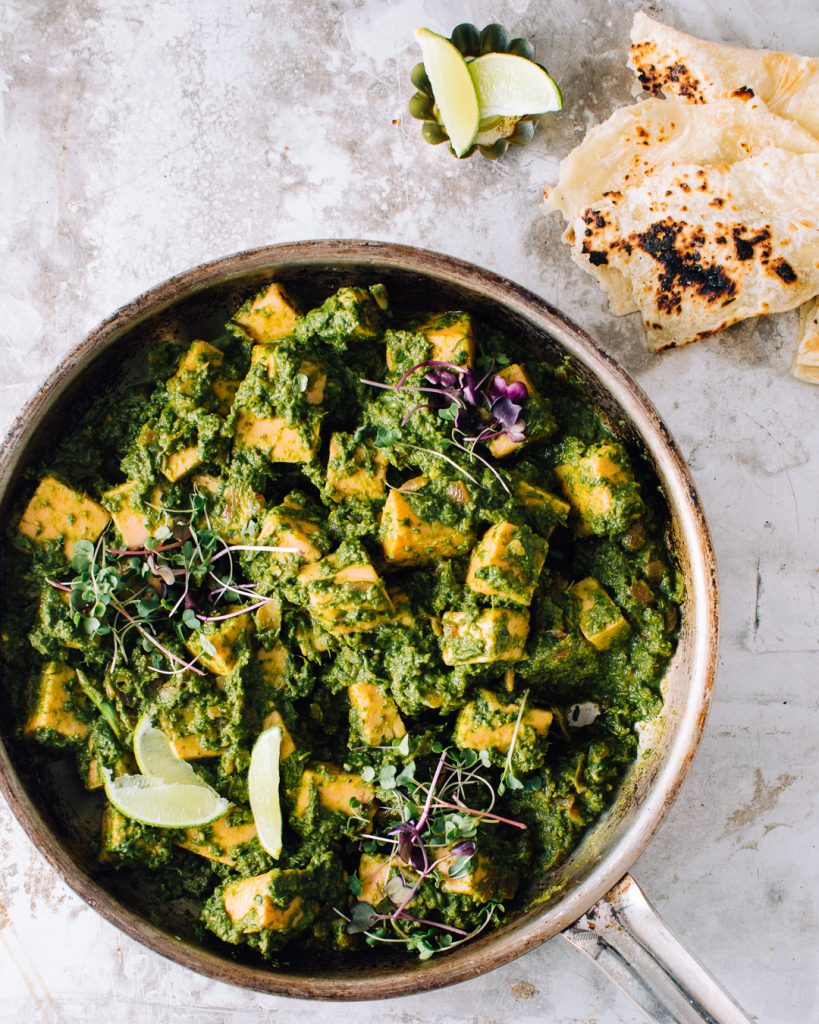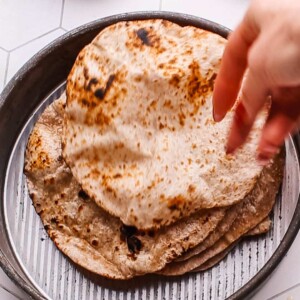Jan 07, 2024, Updated May 13, 2024 This Roti recipe is one of the many Indian flatbreads I’ve been obsessed with perfecting in the 20 years since I met my Indian husband. I’ve literally been making it at least weekly for more than half my life. We met when I was a TEEN and ever since my mother-in-law introduced me to the pleasure of scooping up her delicious curries with a warm, homemade roti instead of a utensil, I’ve been enthralled. While naan is an Indian flatbread that everyone knows, roti is the one that’s more likely to be made in home kitchens on a regular basis. It goes hand-in-hand with Amma’s hearty dal recipe and is a comforting everyday staple. (Read more in: Roti Vs Naan.) I’ve made roti on at LEAST a weekly basis for my whole adult life. All three of our boys (currently aged 4, 8 and 10) can make and roll the dough by themselves. The big ones can do the cooking part, too. My goal before sharing the recipe with you was to nail the ratio and technique for super soft roti that puff up on the stove every time. I’m told that puffing is an indicator of success (and being a good wife 😂). To me, it just means that the final bread is soft and thin (never dense) in addition to being stretchy like a fresh flour tortilla. Plus, it’s just so magical and satisfying to watch.
What is Roti?
Roti is a staple Indian flatbread made with whole wheat flour (called atta flour in hindi). It is made on a daily basis in many homes as an accompaniment to dal and curries as an alternative to serving with rice. Roti are rolled out into thin circles and cooked on a tawa (flat pan) without oil. When done properly, they puff up dramatically as they cook, resulting in a light, soft bread that is perfect for rolling and scooping up sauces.
Why You’ll Love This Roti Recipe
If you’re a soft, stretchy, deliciously authentic homemade basic roti recipe, this one is a sure winner. You’ll be amazed at how simple and rewarding it is to make your own.
The Perfect Texture: Each roti comes out super soft, light, and with the perfect amount of puff, making them an ideal companion for any Indian recipes. Easy Rolling & Cooking: The dough is a dream to work with. Rolling and cooking these rotis is straightforward, even for beginners. Versatility: These rotis can be served with a variety of dishes, from scooping up traditional curries to quick lunch or breakfast wraps, making them a versatile choice for any meal.
This simple Indian bread puffs up EVERY time using my tested-till-perfect method (and my Indian mother-in-law applauds!). Get your applause, friends. Make this roti recipe!
Here’s What You Need for Super Soft Roti Recipe
When making super soft roti, having the right ingredients and tools can make all the difference. Let’s look at what you’ll need.
Super Soft Roti Ingredients
Whole Wheat Flour (Atta): This is the base of the dough, providing structure and traditional flavor. Kosher Salt: Enhances the taste and balances the flavors of the roti. Warm Water: Activates the gluten in the flour, helping to form the dough.
Variations and Substitutions
Flour Options: While whole wheat flour is traditional, you can use part all-purpose flour for a lighter texture, like I do in my soft chapati recipe. Spice It Up: Add a pinch of cumin or carom seeds for a flavorful twist. Vegetable Oil: Some recipes call for adding oil to the dough. I find the oil really inhibits the puffing up and makes the rotis heavier instead of light and airy. It doesn’t make them softer in my opinion, in my many years’ experience making them and testing different variations.
Grab these Tools
Stand Mixer or Mixing Bowl: Essential for combining and kneading your dough. Rolling Pin: For rolling out the dough into thin, even circles. Cast Iron or Nonstick Pan (or Tawa): A must-have for cooking the roti to perfection. Tongs or Spatulas: Useful for flipping the roti and moving it to direct flame, if available.
With these ingredients and tools, you’re all set to make delicious, homemade roti that everyone will love.
How to Make Super Soft Roti: An Easy Guide
Making roti at home is easier than you might think. Follow this simple guide, and you’ll have fresh, warm rotis ready in no time.
Mixing the Dry Ingredients
Start by combining your whole wheat flour and kosher salt in the bowl of your stand mixer or in a large bowl, if you prefer to do it by hand.
Adding Water and Forming Dough
Gradually add warm water to the dry flour mixture. Mix with a wooden spoon until a dough starts to form.
Kneading the Dough
Knead the dough in the stand mixer on a medium-low setting for about 2 minutes. If you’re kneading by hand, do so on a lightly-floured surface for about 8 minutes. Check the dough’s readiness by pressing it with your finger.
Dividing and Resting the Dough
Divide the dough into two large balls, and then further divide each into 8 equal parts.
Roll each portion into a smooth ball and let the dough rest under a damp paper towel or cloth at room temperature.
Rolling Out the Roti
Take a dough ball and roll it out on a lightly floured surface into a thin circle, about 6 inches in diameter. Shake off excess flour.
Cooking the Roti
Preheat a cast iron skillet (tawa or tava in India) or nonstick pan on medium-high heat. Cook the rolled-out dough for about 10-20 seconds on the first side until tiny bubbles start to show on the surface. Flip and cook the other side similarly.
Puffing Up the Roti
Move the semi-cooked roti to another burner with an open flame. Do this carefully using tongs and constantly turn it until it puffs up.
NOTE: If you don’t have a gas stove, you can finish the roti on the same pan. Just flip it 1-2 more times while continuing to press down on it with the spatula as it cooks. It will puff up in spots, but probably not as dramatically. Keep pressing down with a spatula to encourage puffing.
Serving the Roti
Keep the cooked rotis covered in a bowl to retain their softness until ready to serve.
Brush your warm roti with ghee or melted butter to make them extra delicious.
How to Make Rotis Puff Up
Getting rotis to puff up beautifully involves a combination of technique and the right dough consistency. Here are some key tips: Remember, getting rotis to puff up is a skill that improves with practice, so keep trying and adjusting your technique as needed.
Make Ahead and Storage
Planning ahead and storing your rotis properly ensures they stay fresh and delicious. Here are some tips:
Make-Ahead Dough: You can prepare the dough a day in advance and store it in the refrigerator, covered tightly. Refrigerating Dough Balls: Formed dough balls can be refrigerated for up to 4 days; just cover them with a damp cloth and store in an airtight container. Freezing Dough: For longer storage, freeze the dough balls on a tray and then transfer to a freezer bag. They can last up to 3 months. Storing Cooked Rotis: Keep cooked rotis in an airtight container at room temperature for up to 2 days. Freezing Cooked Rotis: Wrap cooked rotis in aluminum foil and place them in freezer bags. They can be stored for up to 1 month. Reheating: Reheat refrigerated or thawed rotis in a pan or microwave until warm.
5 Common Mistakes When Making Roti
Here are the most frequent mix-ups to avoid when making roti:
Using Too Much Flour: Adding excess flour while kneading or rolling can make the roti dry and hard. Inconsistent Thickness: Uneven rolling results in parts of the roti being undercooked or burnt. Overcooking: Cooking roti for too long makes it hard and chewy instead of soft and pliable. Ignoring Rest Time: Not allowing the dough to rest can lead to tough roti. High Heat: Cooking on too high heat can burn the roti outside without giving it a chance to puff up.
Final Notes, Pro Tips + Science-Based Secrets
Unlock the full potential of your roti with these key takeaways:
Right Flour: Use finely ground whole wheat flour (atta) for authentic taste and texture. Water Temperature: Use warm water to make the dough, as it helps hydrate the bran in the whole wheat flour, making the rotis softer. Kneading Properly: A well-kneaded dough leads to softer rotis; it should be soft and pliable. Resting the Dough: Allow the dough to rest for at least 30 minutes; this relaxes the gluten and makes rolling easier. Even Rolling: Roll the rotis evenly to ensure uniform cooking. Medium Heat: Cook the roti on a medium flame for even puffing and cooking. Practice Makes Perfect: Making perfect roti is an art that improves with practice, so don’t get discouraged with initial attempts.
Just skimming through? Here are some quick answers to the commonly-asked questions about roti and related Indian breads: What kind of food is roti?Roti is a type of flatbread that’s a staple in South Asian cuisine. It’s made from whole wheat flour and is commonly served with curries, vegetables, and meats. What is roti from Trinidad?Trinidad roti, influenced by Indian cuisine, is typically a larger, soft flatbread used to wrap curried meat and vegetable fillings, similar to a burrito. What is the healthiest Indian bread?The healthiest Indian bread is typically one made with whole grains, like whole wheat roti or chapati, as they contain more fiber and nutrients compared to breads made with refined flour. Which is healthier, paratha or roti?Roti is healthier than paratha. Roti is a simple unleavened bread made with whole wheat flour, whereas paratha is usually layered with ghee or butter and sometimes stuffed with various fillings. What is a healthier alternative to naan bread?A healthier alternative to naan bread would be whole wheat roti or chapati, as they are made without added fats, made with whole grains, and are thinner and lighter. What is the difference between naan and roti?Naan is a leavened, soft, and thick bread made with all-purpose flour, often enriched with ingredients like yogurt, whereas roti is an unleavened, thinner bread made from whole wheat flour and is typically not enriched with additional fats or dairy.
What is roti vs chapati?
The difference of roti vs chapati is that roti is a more encompassing term that includes chapati as well as other regional varieties of flatbread.
In South Indian cuisine, where my husband’s family is from, the name roti is usually interchangeable with chapati.
In other regions, the term “roti” is more prevalent and can encompass a broader range of flatbreads, including those that are thicker, made with different grains, or additional ingredients like vegetables, spices, and herbs mixed into the dough.
Bottom line: While all chapati is “roti”, not all roti is chapati.
Check out below some other Indian dishes
Life-Changing Chicken Korma Paratha (South-Indian flaky flatbread Butter Paneer Masala The Viral Butter Chicken Recipe Saag Paneer Coconut Curry Chicken
